World’s Landscaping Star Predicts Trends for 2022
By Jill Brooke
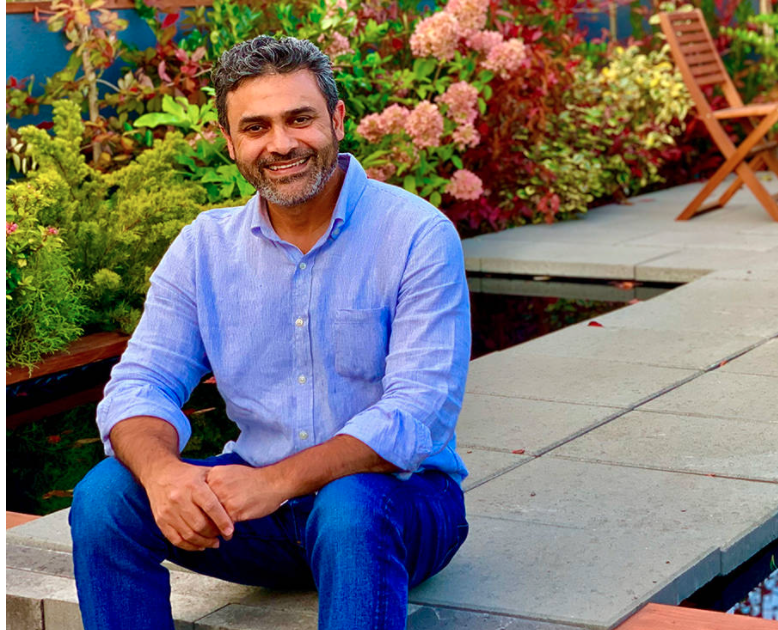
Among his peers, landscape artist Ahmed Iftikhar of Treeline Designz is a superstar – even though he may be one of the most famous garden designers you have never heard of.
For some reason, perhaps because he isn’t based in New York or Florida – and lives in Oregon – many magazine editors haven’t discovered him yet. But there’s a reason that his work keeps getting awards around the globe and he’s been invited to showcase his designs at the Philadelphia Flower Show, RHS’ Chelsea Flower Show in London, and even in Russia, whose population are some of the most passionate flower lovers in the world. Just recently he’s had to turn down installations in China, France, Japan and Australia because of the pandemic as well as the demand for his local business clients which takes priority.
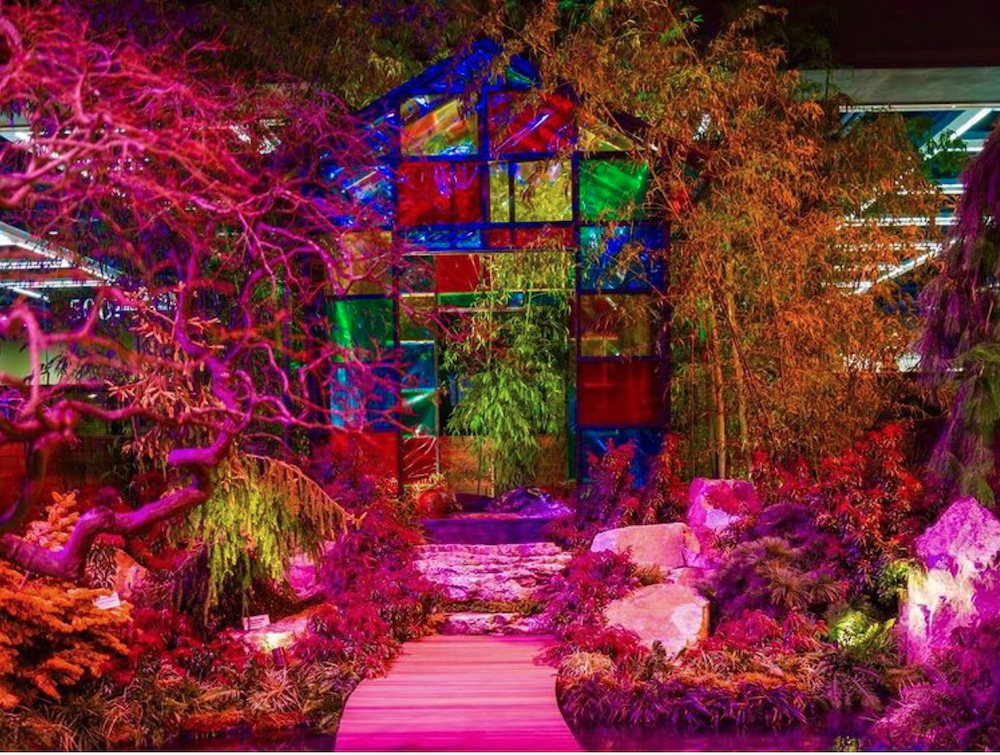
What’s his secret? “I make a design and never repeat it,” says the soft-spoken designer who was born in Pakistan and whose family had formal gardens “for centuries.”
“My family was pioneers in garden design during the Mughal empire,” he adds. “We understand the importance of creating harmony through gardens and the peace and beauty that it brings to the home.”
As the son and grandson of nurserymen and a direct descendent of the noble Mian family who for generations were the custodians of the Shalimar Gardens in Lahore, Pakistan, now a UNESCO world heritage site, he does believe that gardening is in his blood and his mission is to bring the joy of flowers to people’s homes and corporate environments.
I met him at the Philadelphia Flower Show where naturally, he took home a coveted Gold award.
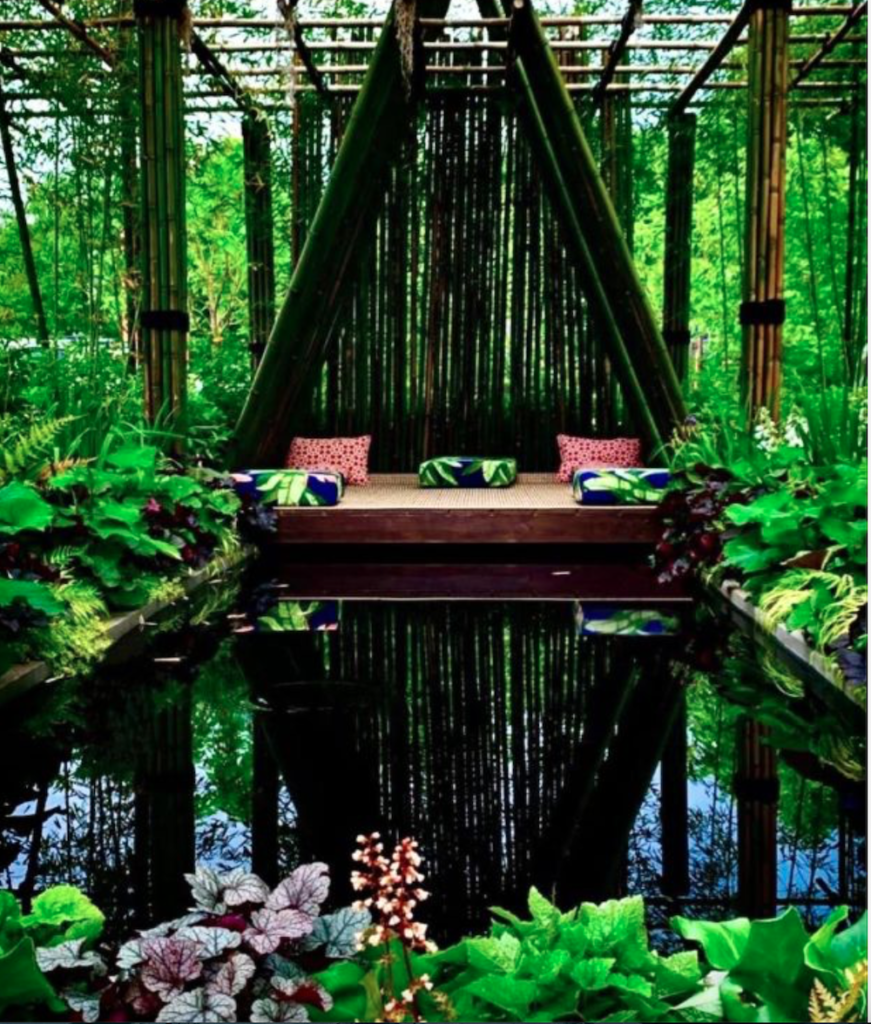
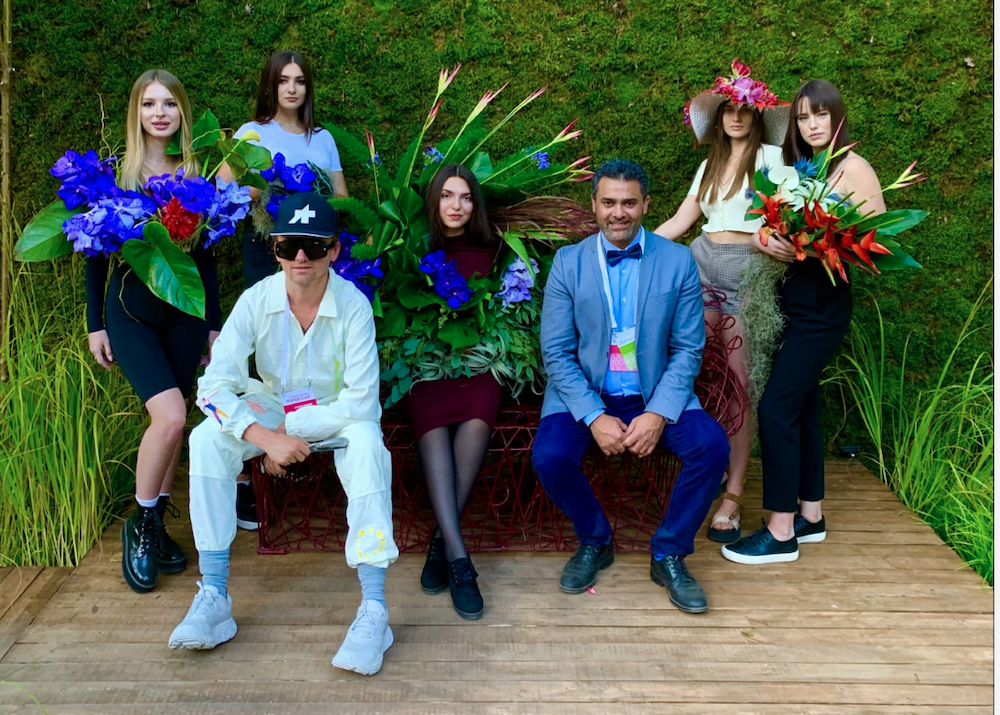
Unlike many star landscape designers, Ahmed doesn’t arrive with attitude or demands. He’s a natural listener. He asks questions about your family, your culture, your likes, and your dislikes, your favorite colors. Perhaps because he’s lived in so many countries, he has a gift of blending different flowers and plants in unexpected but harmonious ways. He is as much a teacher as he is a landscaper.
Of course, I ask him what is his favorite flower.
“That’s like asking a parent which child is your favorite,” says Iftikhar, who came to the U.S. in 2008 when his wife was finishing a degree in technology research and has since accumulated degrees specializing in houseplants, floriculture, floral design, parks, gardens and horticulture. “I like echinacea,” he says. “They are very attractive flowers to the bees and butterflies.” Echinacea was used by the early Native Americans to cure wounds of infections which also appeals to his belief in creating gardens that heal.
“I also love roses for their fragrance and eucalyptus and birch trees for their textures,” he says, adding how he prefers to “mix materials since plants have so many different textures, histories, forms of leaves.”

“You create wonderful surprises when you create these combinations,” he says. “Every single plant on earth blooms with purpose and it’s always a discovery. Green plants can have little flowers and put them next to luderia or another plant with reddish veins. So many possibilities.”
Because of his vast knowledge of global plants, and the spiking interest from plant moms and horticulture enthusiasts, he is also introducing “Hot-Tropicals,” a rare house plant online company in the spring which will feed the appetite for rare plants for everyday consumers. That is definitely a big trend now, he says. “All the rare tropical house plants like aroids species like Philodendron white princes, pink princes, and other variegated varieties are growing in my fully equipped greenhouses,” he says. “I believe that the house plants are the great pets and gift for any rooms and they do not require a lot of maintenance except watering and partial light (photosynthesis).”
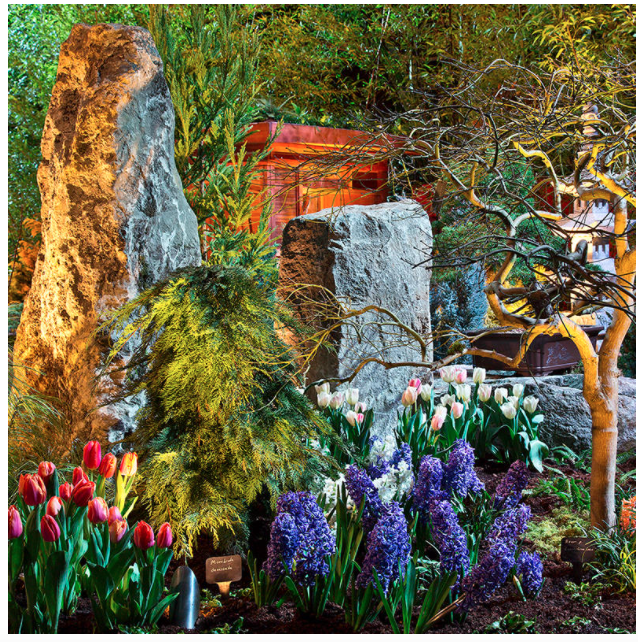
As far as other future trends for 2022?
“I see several trends,” he says. “We will see more outdoor living rooms mixing nature with furniture.” Places, he adds, that have zen-like qualities.
He also has been creating smaller gardens around houses so his happy clients can gaze out a window and be inspired and calmed.
Sustainability is also a big trend that he has been part of for many years. In fact, he’s part of an advanced growing facility called Controlled Environmental Agricultural Facility where they grow vegetables, herbs and flowers. “Our CEAS technology will use 90% less water and space vs traditional agriculture,” he says proudly. “We are seeking funding/investments to establish CEAS in any climate.”
Ahmed also sees the trend continuing of more “wild and natural” vs. the traditional English boxwood as people seek serenity from their environments. Another trend is the use of bold happy colors to brighten people’s days.
Pondering a moment, he concludes, “If I have a philosophy, it would be, I want my clients to feel the garden is in the home and rooms are gardens.”
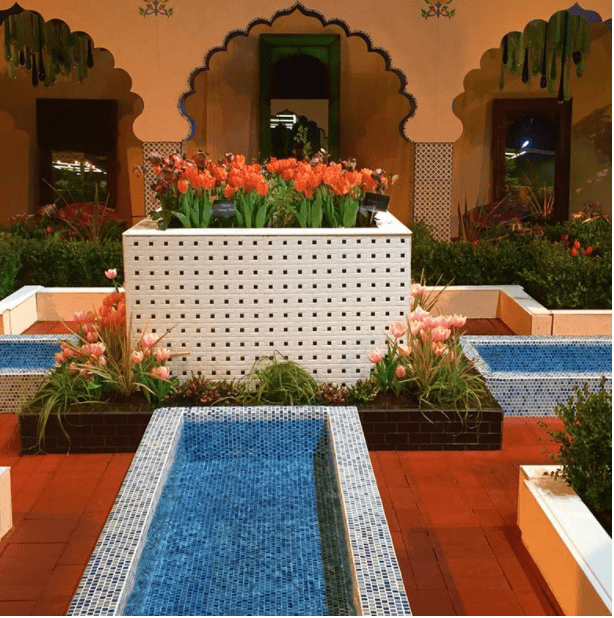
Jill Brooke is a former CNN correspondent, Post columnist and editor-in-chief of Avenue and Travel Savvy magazine. She is an author and the editorial director of FPD and floral editor for aspire design and home magazine and contributor to Florists Review magazine.
Photo Credit: Treeline Designz
